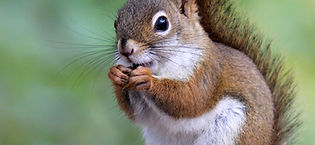Wildlife Removal




Groundhogs
The groundhog, also known as a woodchuck, are well adapted for digging with short and powerful limbs and thick curved claws. They are a nuisance, mainly digging around sheds, under decks and loosening stones around boulder walls. They can live for up to six years, being mostly herbivorous eating wild grasses and other vegetation. Groundhogs are one of the few species that enters into a true hibernation during the winter months. They birth between 2-6 young around April-May and the young groundhogs leave their mother around 5-6 weeks of age.
Raccoons
Raccoons are noted for their intelligence to remember the solution to tasks for up to 3 years! Due to their adaptability and approaching urban areas, some homeowners consider them pests as they find their way inside attic spaces. The young, also known as “kits,” are born in the spring making this the time homeowners usually begin to notice a problem. Raccoons birth 2-5 young and these kit stay with their mother until the fall. Raccoons can carry rabies and also leave a nasty mess behind from urine and feces. For more information on an attic clean up, check out our attic clean-up page.
Skunks
Skunks are known for their ability to spray liquid with a strong odor. They are omnivorous and very commonly seek out garbage left by humans. Skunks dig holes, getting under decks and causing a smelly problem, which is why it's a good idea to trap and relocate them. They usually give birth to 5-6 young in May. Skunks can carry rabies, although it is rare for them to bite a human.
Opossums
Opossums are marsupials with a flexible diet. They have reproductive habits that of colonizers and are survivors and can adapt to diverse locations and conditions. Opossums are nocturnal animals, they favor dark and secure locations, typically under decks or in crawl spaces within the home. Any mammal can carry rabies, but due to their low body temperature (94-97°F,) it makes it difficult for the virus to survive.
Fox Squirrels
Fox squirrels are usually observed in yards or traveling electric lines. They are the largest tree squirrel found in Michigan, usually a cinnamon color with a tan belly. Fox squirrels aren't big chewers and take advantage of preexisting holes or damage to gain access to a home.
Gray Squirrels
Gray squirrels are smaller than fox squirrels and color varies between black and gray. They spend most of their lives in trees or backyards.
Red Squirrels
Red squirrels are smaller in size at about 12-15 inches from nose to tail. They tend to be a solid reddish brown with a light/white belly. These little guys can wreak havoc chewing at eaves or gable vents getting into attics to nest.
Northern Flying Squirrels
Flying squirrels are rarely seen due to their nocturnal habits. They have a flattened tail and excess skin that they use to glide from on tree to another. They will also chew round holes to gain access to attics and walls, causing a racket during night hours.
Chipmunks
Chipmunks are a small ground squirrel. Reddish brown with a white stripe down their back bordered with two black stripes. Chipmunks are usually just an annoyance with loud chirping and tunnels dug through flower gardens.







Pigeons will be found roosting on roofs or causing a serious mess around commercial buildings in rafters or docking areas. We offer numerous solutions for prevention and clean up.
Chimney Swifts are incapable of perching and can only cling vertically to surfaces. They build bracket nests almost always within a human-built structure, usually chimneys. They tend to have babies near the end of May, around this time you may hear an annoying sound coming from your chimney.
Starlings are typically dark with a metallic sheen and a yellow beak. Most nest in holes or find their way into residential exhaust fans or openings. They lay blue or white eggs are can be an annoyance to homeowners. We offer a variety of clean-up and deterrent options.
Sparrows are generally small, plump birds which makes it easy for them to enter though construction gaps in eaves of homes. They will build nests in soffits and attic spaces. We seal there entry points to bird proof your home.
The most common Dead animal situations
Dead animal in home-Dead opossum or raccoon under the home-Dead mouse in the wall-Dead animal in the yard.
Dead animal removal is not an easy task to undertake. It involves crawling in hot attics or under the house, often in hazardous conditions. Once the animal is located, we remove, sanitize and dispose of the carcass in an appropriate manner.
